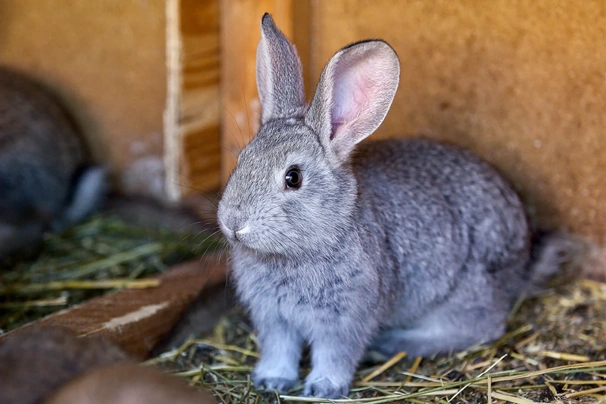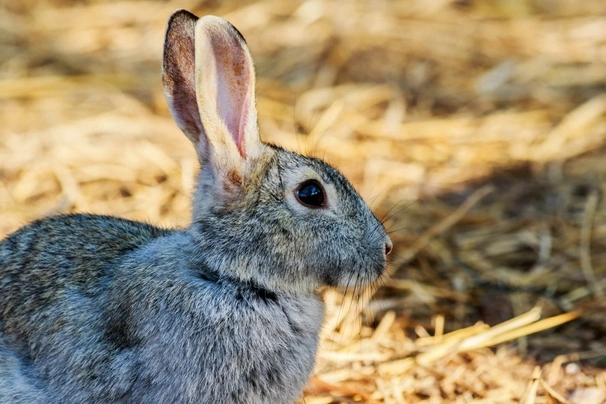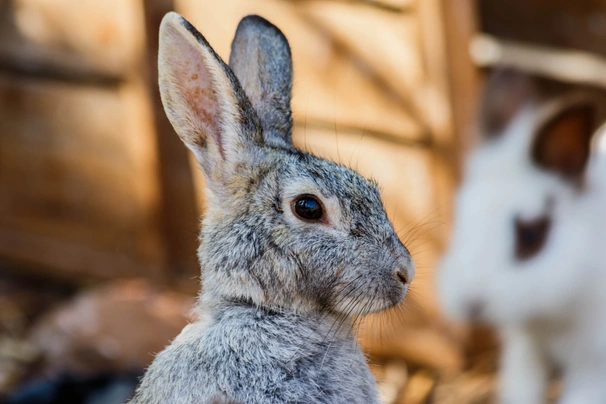Silver
Introduction of the Silver
It’s been suggested that the Silver was first developed in the 16th Century and is therefore considered an ancient breed of companion rabbit. Interestingly, before the Pilgrim Fathers made their way to the Americas, it’s said hat the Silver was housed in warrens after being introduced to England by Sir Walter Raleigh following his travels to Portugal. Some sources also state that Silvers were taken to Portugal by sailors returning from Siam.
The breed is recognised in three colourways – black, fawn and brown, and while many countries have a Silver of some kind or another, the original is found only the UK and the US, although it is rare and is one of the few breeds remaining that still have the ‘Renaissance’ conformation.
It’s quite a small rabbit – weighing in at just five or six pounds and is active and very athletic. It displays a very short coat with white and white-tipped hairs distributed through a black, brown or fawn coat. It’s regularly confused with the Silver Fox breed, but the two are quite different.
History of the Silver
The Silver is one of the oldest breeds of fur rabbit. It’s thought that the foundation animals were imported from Portugal and Siam and bred in vast numbers for the fur trade and exported. The first breeding estates were established in Lincolnshire, where the animal was known as the ‘silver-tipped’. It’s said that from one estate alone, five or six thousand animals were sold every season. The meat was eaten here in the UK, and the skins were sent to the Continent.
The Silver brown was bred by mistake when Silver was put to a Belgian in the hope of achieving more evenness in the colour. The resulting kits resembled wild rabbits and when these were put back to grey Silvers the brown Silver was born. The fawn Silver is thought to be of foreign descent and was developed in France before the Silver made its appearance on British shores.
Appearance of the Silver
- Main colourways: black, brown and fawn with white and white-tipped hairs spread through the coat
- Average weight: 2.3 – 2.7kg
The Silver is a small rabbit that’s light and athletic. This natural athleticism is reflected in its personality and it’s therefore an active animal that enjoys play and exploration.
Prized for their skins, the Silver boasts thick shiny, short hair which is either black, brown or fawn that’s liberally sprinkled with white hairs and coloured hairs that have white tips. This ‘silvering’ should be evenly distributed through the fur including the feet, ears, tail and head.
The Silver has a compact or ‘Renaissance’ body shape that’s rounded – a bit like half a ball with an even width, depth and length.
Temperament of the Silver
The Silver is a very active rabbit and must therefore be given lots of opportunities to exercise outdoors either in a large run, or in a secure area of garden. Special harnesses and leads can be purchased so you can talk your rabbits for walks, and they will also appreciate playtime with their owners. Provide them with cat toys with rattles and bells, as well as cardboard boxes and tubes to chew, hide in and climb on and they’ll be happy.
With a calm, docile and affectionate personality, the Silver Rabbit will make anyone a fantastic pet and is ideal for adults and children. Despite its easy-going demeanour, it’s worth considering that all rabbits need handling correctly and therefore anyone who looks after a rabbit must know how to do this. If a rabbit feels vulnerable or uncomfortable when picked up he may struggle. A panicking rabbit is very strong and can cause injury to himself or his owner, so he must be picked up only by someone who knows how to do it properly.
Health of the Silver
As with most rabbit breeds there are a number of conditions that any responsible owner should watch for and try to prevent.
Atmospheres that are dusty or full of fumes should be avoided, as should extreme fluctuations in temperature. Rabbits are delicate creatures and can easily develop respiratory problems if they are exposed to conditions that are too hot or too cold, or air that’s dusty or polluted.
Teeth should be monitored closely as they grow continually and can easily get too long. Overgrown molars and enamel spurs can cause injuries in the mouth, as well as problems with eating, so the teeth must be kept worn down with a diet that’s high in roughage and gnaw toys. If the teeth do get too long, veterinary attention must be sought.
Any rabbit must be fed a diet that’s high in fibre and balanced to ensure he doesn’t get over weight. An obese rabbit will have difficulty grooming himself and may then be vulnerable to flystrike in the warmer months.
All rabbits should be vaccinated against myxomatosis and Viral Haemorrhagic Disease – both of which are highly contagious and often fatal. Your pet should also be treated regularly for fleas, ticks and worms and non-breeding does can be spayed to prevent uterine cancer.
Caring for the Silver
The Silver is perhaps best kept as a hutch rabbit. They enjoy cosy quarters, and if they live in pairs they’ll be more than happy. The hutch should be located out of the full glare of the sun as this can be uncomfortable and affect the quality of the coat. A light, well-ventilated shed is ideal, but anywhere that’s sheltered will be fine, as long as the hutch is weatherproof and has a cover for the front when the weather turns.
The hutch should be big enough for all residents to hop around and stand on their hind legs and it must be lined with hardwood shavings and straw so they can create a comfy nest. Rabbits should be fed a high fibre diet that includes good pellets and high quality hay, as well as lots of fibrous green vegetables like cabbage, kale, dandelion leaves and carrot tops. They should also have access to clean drinking water at all times.


